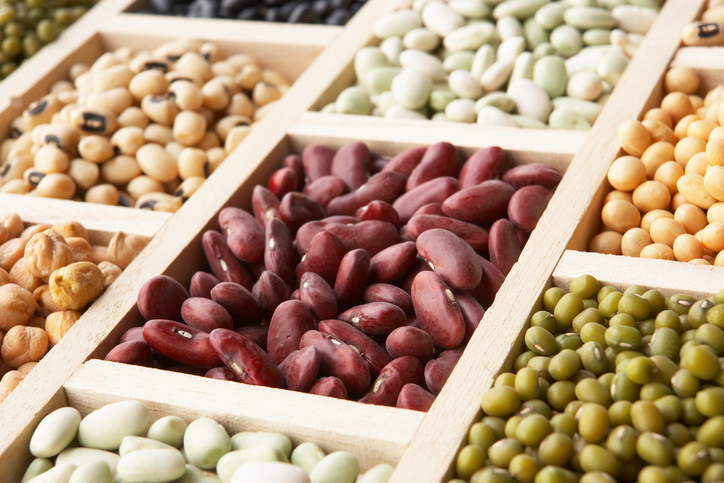
Pulses: delicious, healthy grains
These nutrient-packed seeds are used in healthy dishes all over the planet.
Pulses are incredibly healthy foodstuffs. They are packed with protein, carbohydrate, fibre, and minerals, and they contain zero saturated fat, salt, and gluten.
Nutritionists have labelled them super foods, because they can help to treat nutritional problems such as obesity, type-2 diabetes and cancer. Pulses are so important that the General Assembly of the United Nations declared 2016 as the International Year of Pulses, to raise people’s awareness of their many benefits. Although they are tiny, they are amazingly healthy.
Among many other benefits, these healthy grains contain a large amount of energy in the form of complex carbohydrates and fibre, substances that are digested and burned slowly, which staves off hunger pangs. They are also low in fat (300 kcal per 100 grams), which helps to maintain a healthy weight and fight fatigue and anaemia with the iron they contain.
Around the world in six pulse dishes
Pulses are used in traditional dishes in countries all over the world. Here is a selection of recipes from different cultures and traditions, whose main ingredients are pulses.
- Home-cooked beans (United Kingdom)
It takes around three hours to make home-made beans, which is why most British people buy them in cans. More than two million cans of beans are sold every day in England. The recipe contains well-known ingredients: dry white beans, rapeseed oil, carrot, celery, onion, garlic, tomato, vinegar, brown sugar, salt, and pepper. 
- Chickpea and spinach stew (Spain)
This Andalusian stew is delicious and nourishing, and perfect for lunch or dinner. It takes less than 30 minutes to make: chickpeas are cooked in water over a low heat with olive oil, onion, and carrots. A paste is made with garlic, salt, boiled yolk, pine kernels and paprika to add to the spinach and chickpea stew. 
- Red lentil soup (Turkey)
Red lentils, also known as Turkish lentils, cook very quickly and are perfect for soups and creams, because they disintegrate when cooked. They are simple to prepare, do not require soaking and are ready to eat in just 20 minutes. The exotic flavour of this dish comes from the onion, carrot, paprika, cumin, tomato, pepper, and sumac (an acidic, red spice) and mint. 
- Frijoles charros (Mexico)
Frijoles (kidney beans) come from Mexico, and are a staple ingredient in many of its national dishes. This traditional recipe is made with onions, garlic, chilli, bacon, tomato, coriander, and chorizo sausage, according to the region. Although it is a hearty dish, it is usually served as a garnish and an accompaniment to meat. 
- Pea soup (Germany)
Erbsensuppe is very popular in Germany, Holland and Sweden, and the main ingredient is peas. It is made by mashing the peas into a purée. The soup is served very hot (ideal for winter) and is usually an accompaniment for sausages or kassier (pork fillet). 
- Black-eyed pea salad (Italy)
Black-eyed peas are a type of bean with a black dot in the centre. They are cooked in the same way as other pulses. They must be soaked and boiled before use. Tomato, rocket, celery, pepper, and virgin olive oil make this salad flavoursome and colourful. 
As you see, there are numerous ways for enjoying and benefiting from pulses. To avoid indigestion, it is best to soak them for between four and eight hours, to make them easier to digest and prevent flatulence.
Experts advise eating pulses at least three times a week, cooked with vegetables or with low fat meat.
This post is also available in: Italian
